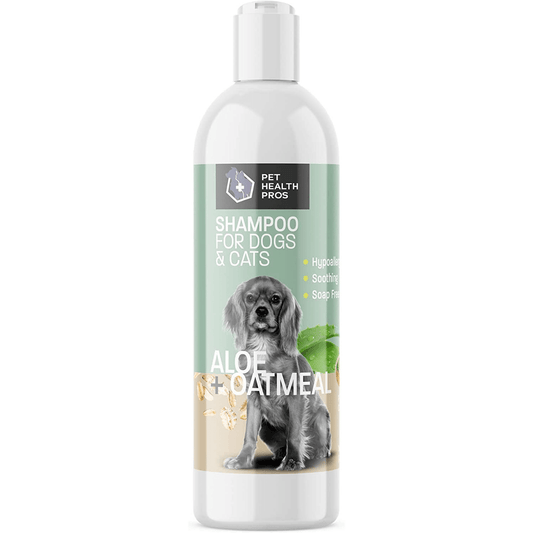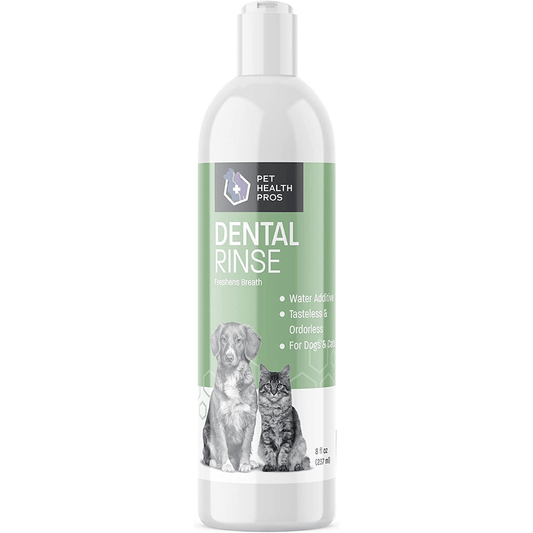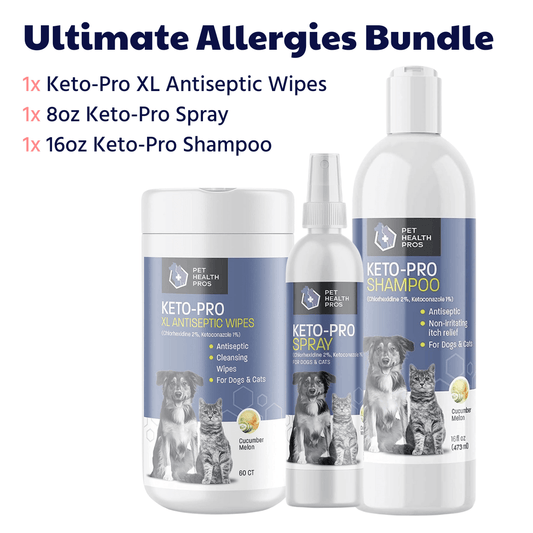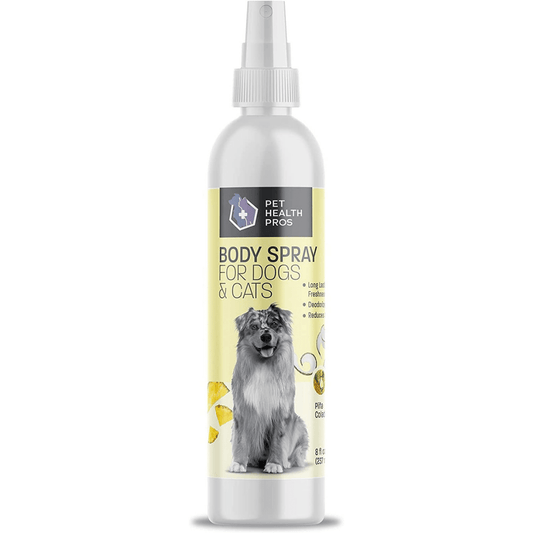Yeast infections in a dog's ears can be uncomfortable and concerning for pet owners. Understanding the symptoms, causes, and treatments for this common issue is essential for maintaining your dog's ear health. In this article, we will explore how to combat yeast infections in your dog's ears effectively and provide preventive measures to keep their ears healthy and infection-free.
Key Takeaways
- Recognize the symptoms of yeast infection in your dog's ears early to seek prompt treatment.
- Addressing the root causes of yeast infections, such as allergies or moisture, is crucial for prevention.
- Effective treatments for yeast infections include medication options, home remedies, and consulting a veterinarian for tailored treatment plans.
- Maintain regular ear cleaning practices to prevent yeast infections and promote overall ear health in your dog.
- Monitor and manage ear infections promptly to prevent complications and ensure your dog's comfort.
Understanding Yeast Infection in Dog's Ears
Recognizing Symptoms of Yeast Infection
Identifying a yeast infection in your dog's ears early can be crucial for a quick and effective treatment. The most common symptoms include excessive scratching of the ears, head shaking, and a noticeable odor. Dogs may also exhibit redness, swelling, and a brown or yellow discharge in the affected ear.
Yeast infections can cause significant discomfort for your pet, leading to behaviors such as rubbing their ears against furniture or the floor. It's important to note these behavioral changes as they can be indicative of an underlying issue.
Early detection and treatment are key to preventing more serious complications that can arise from untreated infections.
Here is a list of symptoms to watch for in your dog:
- Excessive scratching of the ears
- Head shaking
- Unpleasant odor emanating from the ears
- Redness and swelling inside the ear
- Brown or yellow discharge
- Behavioral changes such as rubbing ears against objects
If you observe any of these symptoms, it is advisable to consult with a veterinarian to determine the best course of action.
Causes of Yeast Infection in Dog's Ears
Yeast infections in a dog's ears are commonly caused by an overgrowth of the fungus Malassezia pachydermatis. This overgrowth can be triggered by a variety of factors, each contributing to the ideal environment for yeast proliferation.
The primary causes include:
- Excessive ear moisture, often from swimming or bathing
- Allergies, which can lead to ear inflammation and increased wax production
- Ear canal shape and size, with certain breeds being more susceptible
- Hormonal imbalances, such as hypothyroidism
- Compromised immune systems, which can be due to illness or medication
Maintaining a clean and dry ear environment is crucial for preventing yeast overgrowth. Regular check-ups can help identify underlying conditions that may predispose your dog to infections.
Understanding these causes is essential for prevention and effective treatment. If you suspect your dog is suffering from a yeast infection, consulting a veterinarian is the best course of action. They can provide tailored recommendations and treatment plans, ensuring the health and comfort of your pet.
Preventive Measures for Yeast Infections
Preventing yeast infections in your dog's ears is crucial for their comfort and health. Regular ear examinations are a key step in early detection and prevention. By checking your dog's ears frequently, you can spot signs of infection before they become serious.
Maintaining a clean ear environment is also essential. Use a vet-recommended ear cleaner to gently wipe away debris and excess wax, which can be a breeding ground for yeast. Here's a simple list of preventive measures:
- Conduct weekly ear inspections
- Clean ears with a vet-approved solution
- Keep ears dry, especially after baths or swimming
- Ensure a balanced diet to support immune health
- Avoid over-cleaning, which can irritate the ear canal
Note: Over-the-counter products can be helpful, but it's important to consult with your veterinarian before starting any new ear care regimen.
For dogs prone to ear infections, consider lifestyle adjustments such as dietary changes. A diet rich in probiotics can help maintain a healthy balance of bacteria and yeast in your dog's body. Additionally, managing allergies, which often contribute to ear infections, can prevent yeast overgrowth. If you're unsure about the best course of action, a veterinary professional can provide personalized advice tailored to your dog's specific needs.
Effective Treatments for Yeast Infection
Medication Options for Yeast Infection
When it comes to combating yeast infections in your dog's ears, medication plays a pivotal role. Antifungal agents are commonly prescribed to tackle the overgrowth of yeast. These medications come in various forms, such as ear drops, ointments, or systemic oral drugs.
Topical treatments are often the first line of defense. They are applied directly to the affected area and can provide quick relief. For more severe or persistent infections, oral antifungal medications may be necessary. It's important to follow the dosage and duration recommended by your veterinarian to ensure the infection is fully eradicated.
- Antifungal ear drops
- Topical ointments
- Oral antifungal drugs
Consistent and correct application of medication is crucial for the treatment of yeast infections in dogs' ears. Skipping doses or stopping treatment prematurely can lead to a recurrence of the infection.
Always consult with a veterinarian to determine the most appropriate treatment plan for your dog. They can diagnose the specific type of yeast infection and prescribe medication accordingly. Regular follow-up exams are essential to monitor the infection's response to treatment and to make any necessary adjustments.
Home Remedies and Natural Treatments
While some pet owners may wonder, "Can you treat a dog ear infection without a vet?" it's crucial to understand that home remedies can sometimes do more harm than good. For instance, using vinegar as a treatment might seem effective due to its acidic properties, which can kill yeast. However, vinegar is primarily water and can potentially irritate the ears or exacerbate the infection.
Home remedies should be approached with caution and should not replace professional veterinary care. Nonetheless, there are some natural treatments that can support ear health and complement medical treatments:
- Apple Cider Vinegar (ACV): Dilute ACV with water and use it to gently clean the ear, but only if the ear drum is intact.
- Coconut Oil: Known for its antifungal properties, it can be applied to the ear, but in moderation.
- Probiotics: Administering probiotics can help balance the ear's microbiome and prevent yeast overgrowth.
It's essential to consult with a veterinarian before trying any home or natural remedies to ensure they are safe and appropriate for your dog's specific condition.
Consulting a Veterinarian for Treatment Plans
When dealing with a yeast infection in your dog's ears, consulting a veterinarian is crucial for a tailored treatment plan. Veterinarians can provide a comprehensive diagnosis, ensuring that the treatment addresses the specific type of yeast and the severity of the infection. They may suggest a combination of topical and oral medications, and in some cases, recommend advanced treatments such as laser therapy.
- Topical antifungal medications
- Oral antifungal drugs
- Ear cleaners with antifungal properties
- Advanced options like laser therapy
It's important to follow the veterinarian's instructions closely to prevent recurrence and ensure the infection is fully resolved.
Remember, each dog is unique, and what works for one may not work for another. Regular follow-ups with the vet will help monitor the infection's progress and adjust the treatment as needed.
Maintaining Ear Health in Dogs
Regular Ear Cleaning Practices
Maintaining the ear health of your dog is crucial, and regular cleaning is a key component. Regular ear cleaning can prevent the buildup of wax and debris, which can lead to infections, including yeast infections. It is ideal to check the ears at the time of a regular bath and remove any visible wax with a dry tissue or gauze. For dogs who swim regularly, more frequent checks may be necessary to ensure their ears remain healthy and free of excess moisture.
Consistency is vital when it comes to ear cleaning. Establishing a routine helps prevent potential issues before they become problematic. Below is a simple guide to regular ear cleaning:
- Inspect your dog's ears regularly for signs of dirt, wax, or infection.
- Gently clean the outer ear with a soft cloth or a piece of gauze dampened with a suitable ear cleaning solution.
- Avoid inserting anything deep into the ear canal to prevent damage.
- Reward your dog after each cleaning session to associate the process with positive experiences.
Remember, while regular cleaning is important, over-cleaning can cause irritation and should be avoided. Always use products specifically designed for dogs, and consult your veterinarian if you're unsure about the proper cleaning technique or frequency.
Balancing Ear Moisture Levels
Maintaining the right balance of moisture in your dog's ears is crucial for preventing yeast infections. Excessive moisture can create an environment conducive to yeast growth, while too little can lead to dryness and irritation. Regularly check your dog's ears for signs of abnormal moisture levels, such as wetness after swimming or bathing.
To help balance ear moisture, consider the following steps:
- Gently wipe the ears with a soft, dry cloth after exposure to water.
- Use vet-recommended ear cleaners that maintain proper pH levels.
- Avoid over-cleaning, which can strip away natural oils and lead to dryness.
It's important to strike a balance; ears should not be too wet or too dry. Observing your dog's behavior can also provide clues to their ear health. Scratching or shaking the head frequently may indicate discomfort due to improper moisture levels.
Remember, while maintaining ear moisture is a key aspect of ear health, it's just one part of a comprehensive approach to preventing ear infections. Regular vet check-ups and adhering to a holistic ear care routine are essential.
Monitoring and Managing Ear Infections
Monitoring your dog's ear health is an ongoing process that requires vigilance and a proactive approach. Early detection and management of ear infections can prevent more serious complications. Regularly check your dog's ears for signs of infection, such as redness, swelling, or an unusual odor. If you notice any of these symptoms, it's important to act quickly.
Consistency in monitoring is key to managing ear infections effectively. Here's a simple checklist to help you keep track:
- Observe your dog's behavior for any signs of discomfort or scratching
- Examine the ears for discharge or debris
- Note any changes in odor or coloration of the ear canal
- Schedule regular veterinary check-ups for professional assessment
Remember, maintaining a routine can significantly reduce the risk of chronic ear infections and contribute to your dog's overall well-being.
When an infection is suspected, consult with your veterinarian for an accurate diagnosis and treatment plan. They may prescribe medication or recommend further tests to determine the underlying cause. Adhering to the prescribed treatment and following up with your vet is crucial for your dog's recovery.
Ensuring your furry friend's ears are healthy is crucial for their overall well-being. At Pet Health Pros, we offer a range of products specifically designed to maintain ear health in dogs. From advanced soothing ear wipes to professional ear cleaner solutions, we have everything you need to keep your dog's ears clean and infection-free. Visit our website today to explore our selection and take the first step towards optimal ear care for your canine companion.
Conclusion
In conclusion, understanding the symptoms of yeast infection in your dog's ears is crucial for early detection and effective treatment. By being vigilant and proactive, pet owners can ensure the well-being and comfort of their furry companions. Remember, consulting with a veterinarian for proper diagnosis and treatment is always recommended. With the right knowledge and care, you can combat yeast infections in your dog's ears and promote their overall health and happiness.
Frequently Asked Questions
How common are yeast infections in dog's ears?
Yeast infections in dog's ears are fairly common, especially in breeds with floppy ears or dogs that swim frequently.
What are the typical symptoms of a yeast infection in a dog's ears?
Common symptoms include itching, redness, swelling, discharge, and a foul odor coming from the ears.
Can I use over-the-counter medications to treat my dog's yeast infection?
It is recommended to consult with a veterinarian before using any over-the-counter medications to ensure proper treatment and dosage.
Are there any natural remedies I can use to help alleviate my dog's yeast infection symptoms?
Some natural remedies like diluted apple cider vinegar or coconut oil may provide relief, but it's best to consult with a vet first.
How can I prevent yeast infections in my dog's ears?
Regular ear cleaning, keeping the ears dry, and avoiding excessive moisture can help prevent yeast infections in your dog's ears.
When should I seek veterinary care for my dog's ear infection?
If your dog's ear infection symptoms persist, worsen, or if you notice any signs of pain or discomfort, it's best to consult a veterinarian for proper diagnosis and treatment.









